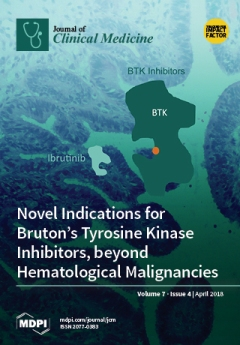The association between the Pro12Ala polymorphism of the
PPARγ2 gene, type 2 diabetes (T2D), and obesity in certain ethnic populations has been reported. However, this relationship has not yet been described among diabetes patients in Nigeria. This study investigated the relationship between the
[...] Read more.
The association between the Pro12Ala polymorphism of the
PPARγ2 gene, type 2 diabetes (T2D), and obesity in certain ethnic populations has been reported. However, this relationship has not yet been described among diabetes patients in Nigeria. This study investigated the relationship between the Pro12Ala polymorphism in the
PPARγ2 gene, obesity, and lipid abnormalities characterizing T2D among patients in Nigeria. This case-control study recruited 73 T2D and 75 non-diabetic (ND) patients. Demographic and clinical data were collected and blood glucose levels together with serum lipid profile for patients were measured. Pro12Ala polymorphism in the
PPARγ2 gene was genotyped by restriction fragment length-Polymerase Chain Reaction (RFLP-PCR). The
PPAR-γ2 gene (amplicon size = 270 base pair) was successfully amplified for all samples. Following restriction enzyme digestion and analysis by agarose gel electrophoresis, amplicons from samples showed a band of size 270 bp and were of the wild homozygous Pro/Pro genotype. Ala12 variant was totally absent from the study population. Obesity, estimated using Body Mass Index (BMI) and waist circumference (WC), was significantly higher (
p < 0.05) in T2D patients compared to the non-diabetic patients. More so, the prevalence of lipid abnormalities; hypercholesterolaemia (TC > 200 mg/dL), hypertriglyceridaemia (TG > 150 mg/dL), high HDL (>100 mg/dL), and low HDL (<50 mg/dL) was significantly greater (
p < 0.001) in T2D patients compared to non-diabetic patients. Results obtained further indicated lack of significant association between
PPAR-γ2 gene polymorphism, T2D, and obesity. However, obesity and dyslipidaemia were strongly associated in T2D patients.
Full article






